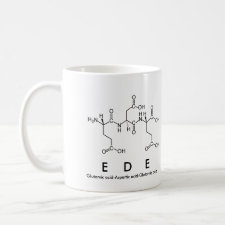
Authors: Iacob BC, Bodoki E, Florea A, Bodoki AE, Oprean R
Article Title: Simultaneous Enantiospecific Recognition of Several β-Blocker Enantiomers Using Molecularly Imprinted Polymer-Based Electrochemical Sensor.
Publication date: 2015
Journal: Analytical Chemistry
Volume: 87
Issue: (5)
Page numbers: 2755-2763.
DOI: 10.1021/ac504036m
Abstract: The development of a chiral electrochemical sensor using an electrogenerated molecularly imprinted polymer (MIP)-based ultrathin film using R(+)-atenolol (ATNL) as a template was reported. The proposed sensor exhibited distinctive enantiospecific oxidation peaks toward the R-antipodes of four β-blocker representatives and additional oxidation peaks common to both enantiomers of each studied β-blocker, allowing thus the simultaneous analysis of all of their enantiomers in a single analysis. The specific preconditioning of the polymer by alternative exposure to aqueous and nonaqueous medium was proven to be essential for the chiral recognition ability of the obtained sensor. The rebinding property of the MIP film was studied by using a well-known redox probe, a change in the morphology and diffusive permeability of the thin polymeric layer in the presence of its template being observed. The applicability of the optimized analytical procedure was demonstrated by the analysis of ATNL's enantiomers in the range of 1.88 x 10-7 - 1.88 x 10-5 mol/L. The developed polymeric interface is the first reported transductor of a chiral electrochemical sensor able to exhibit simultaneous enantiospecificity toward several β-blocker representatives extensively used in the pharmaceutical and biomedical fields, offering good prospects in the simple, cost-effective, and fast assessment of their enantiomeric ratio and total concentration
Template and target information: R(+)-atenolol, ATNL, atenolol, β-blockers



Join the Society for Molecular Imprinting

New items RSS feed
Sign-up for e-mail updates:
Choose between receiving an occasional newsletter or more frequent e-mail alerts.
Click here to go to the sign-up page.
Is your name elemental or peptidic? Enter your name and find out by clicking either of the buttons below!
Other products you may like:
 MIPdatabase
MIPdatabase









